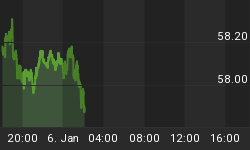"...The trouble with moral hazard is that it's just so contagious..."
IN 1994 THE GERMAN mining and engineering conglomerate, Metallgesellschaft, lost $1.5 billion playing the oil futures market.
The following year, 1995, one of Britain's oldest and most respected banks - Barings - was sunk by a dealer in Singapore who lost $860 million trading Japanese stock futures.
In 1986 the world's biggest copper trader, Sumitomo, found that it had lost a total of $2.6 billion thanks to its own rogue trader, Yasuo Hamanaka.
And in 1997, two professors from Harvard won the Nobel Prize for Economics after spotting a way to turn tiny moves in asset prices into big tasty gains. All it took was a clever little formula, plus a massive position in derivative contracts. And that was also all it took for the company they advised, Long-Term Capital Management (LTCM), to blow up with $3.5 billion in losses in 1998.
The collapse was so dramatic, the New York Fed stepped in and put together a rescue package for LTCM's creditors. But glancing back from here in spring 2007, the really funny thing is how quaint these disasters look today. Never mind how quaint they might look by this time next year.
"The Federal Reserve provided its good offices to LTCM's creditors, not to protect LTCM's investors, creditors, or managers from loss," said Alan Greenspan, then Fed chairman, in Oct. 1998, "but to avoid the distortions to market processes caused by a fire-sale liquidation and the consequent spreading of those distortions through contagion.
"To be sure, this may well work to reduce the ultimate losses to the original owners of LTCM, but that was a byproduct, perhaps unfortunate, of the process."
Fast forward eight-and-half-years, and the unfortunate byproduct of the LTCM rescue is still known as the "Greenspan Put" today - even though Sir Alan of Greenspan moved onto the consultancy gravy-train back in Jan. 2006.
Does his eponymous "put option" remain available to over-geared speculators? News from Ohio says that the logic of the Greenspan Put is now seeping into much more than just tradable securities.
"Do you have an adjustable rate mortgage (ARM) and worry about how you are going to make your monthly mortgage payment once the loan enters the adjustable phase?" asks the Ohio Housing Finance Agency (OHFA) on its homepage.
"The Opportunity Loan is a refinance program that provides an affordable 30-year, fixed-rate financing alternative to borrowers who feel their current loan does not fit their financial circumstance," the OHFA goes on.
The loans, available from Monday, 2nd April, must represent some kind of breakthrough in state-sponsored aid to over-geared speculators. (Vermont's housing finance agency will also help with refinancing, but only on qualifying mobile homes.) But who's being saved from themselves? Subprime homebuyers couldn't get a sensible home-loan even before credit standard were tightened in the face of the subprime collapse. Whereas the mortgage lenders, on the other hand, are dreading a further surge in delinquency rates and a further collapse in unsold inventory prices.
Ohio's new Opportunity Loans carry a fixed interest rate of 6.75%. Borrowers earning up to 125% of their county's median income will be able to apply. And why not? "Ohio leads the nation with 11.32% of sub-prime loans in foreclosure and 3.38% of all housing loans in foreclosure," as Martin Hutchinson notes for BreakingViews.com.
There are a further 54 housing finance agencies in the US. No doubt all of them are closely tracking Ohio's foray into fixing its failing subprime market. Moral hazard always proves dreadfully contagious!
"The principal policy issue arising out of the events surrounding the near collapse of LTCM is how to constrain excessive leverage," wrote the President's Working Group on Financial Markets in April 1999. Often referred to as the Plunge Protection Team, the Working Group fretted that the bankruptcy of LTCM "could have potentially impaired the economies of many nations, including our own" if the Fed hadn't stepped in so ably and so quickly.
Leverage since then, however, has only switched markets rather than pulling back. First it poured into margin accounts for private day traders...and then it sloshed into houses that no one could afford without exploding ARMs and neg-am contracts. Just so long as the money keeps flowing, there's nothing to fear. The Fed will underwrite your chosen excess. Move tables if you must, but please - just keep gaming.
And besides, "leverage in most hedge funds is generally much less than is true for most large banks and securities firms," as the assembled egg-heads of the Financial Economists Roundtable put it in their response to the Working Group's LTCM report. So why fret about the hedge funds when the banks and brokers are so heavily geared? And why fret about the banks and brokers now that lower-income households owe six, seven or more times their gross earnings on adjustable rates that are about to adjust?
"All this takes us to a rather disturbing bi-modal endgame," wrote Stephen Roach of Morgan Stanley in a note late last month - "the bursting of the proverbial Big Bubble that brings the whole house of cards down or the inflation of yet another bubble to buy more time.
"The exit strategy is painfully simple: Ultimately, it is up to Ben Bernanke - and whether he has both the wisdom and the courage to break the daisy chain of the Greenspan Put."
So far, Dr. Bernanke has yet to face expiry or exercise of his predecessor's undated promise to the markets. But with US Dollar interest rates now at 5.25%, there are 17 baby-steps between here and the "emergency" rate of 1% that Greenspan oversaw in response to the Tech Stock collapse.
How low might Bernanke now go? Choosing more easy money to fix the problems caused by too much easy money will only store up fresh trouble ahead. It would also throw gasoline onto gold's smoldering bull market.
That doesn't mean the US Fed won't try it regardless.
















